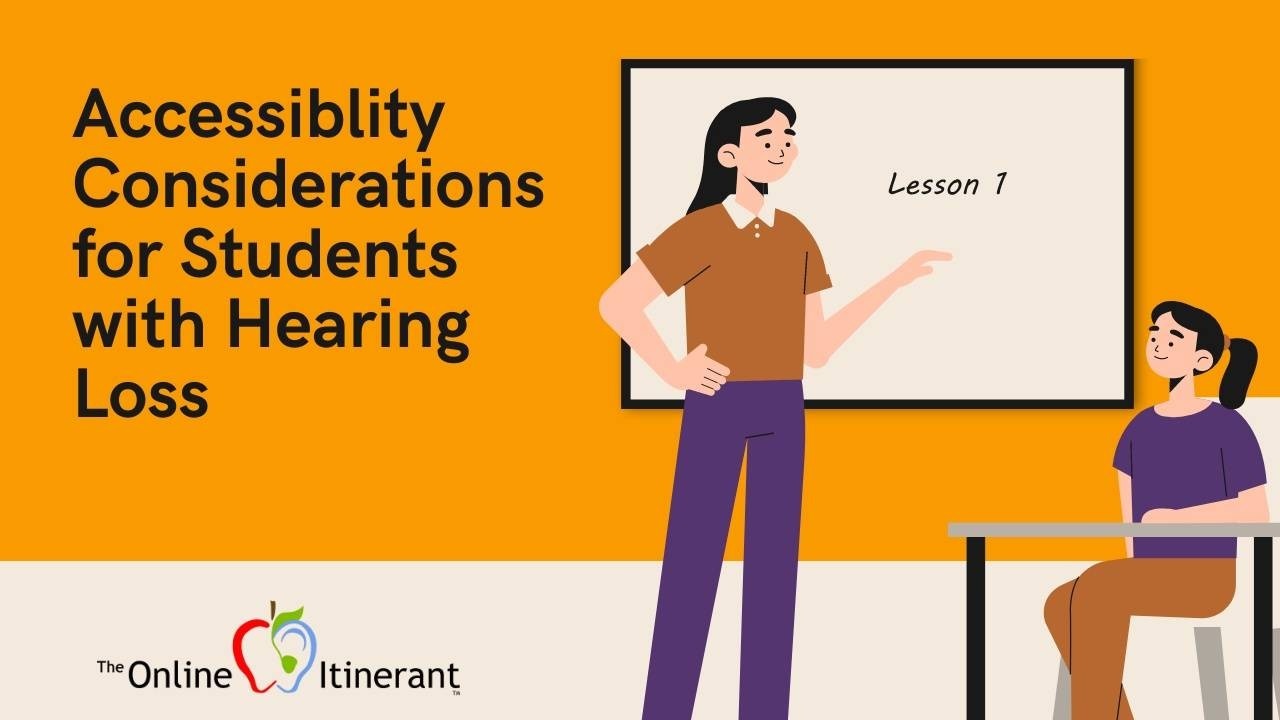Is Your Student REALLY Ready for the Mainstream Classroom?
Jul 28, 2021
Is your Deaf or Hard of Hearing student REALLY ready for the mainstream classroom?
This blog post will help you confirm this placement and help align your student for success.
Why this post? Providing you with a way to get data-based and needs-specific information for student placement will ensure your student will be in a classroom and environment that caters to their specific needs. Not only will your student have access to their mainstream education through this tailored learning, but they will also be better equipped in social situations and communicating with their peers.
Why prepare? Isn’t what’s in place already good enough? Nearly 90% of DHH students in the US are mainstreamed in public school programs. And, of those students, about half are in a general education classroom with the support of a DHH itinerant teacher. That is a large number of DHH students in a general education setting needing support. This means that sometimes students are placed in schools or classrooms that might not be the best fit for them. Having this information will ensure you have everything in place to ensure that your students are accommodated in the most appropriate way, setting them up for success.
It all goes back to the IDEA Section 300, or the Individuals with Disabilities Education Act. The purposes of this section are to ensure that all children with disabilities have available to them a free appropriate public education that emphasizes special education and related services designed to meet their unique needs and prepare them for further education, employment, and independent living; and to ensure that the rights of children with disabilities and their parents are protected.
IDEA states in Sec. 300.552(a)(1) that “in determining the educational placement of a child with a disability, including a preschool child with a disability, each public agency shall ensure that the placement decision is made by a group of persons, including the parents, and other persons knowledgeable about the child, the meaning of the evaluation data, and the placement options.”
There are also special factors to consider. Every child is different and may require different needs. The very first step is understanding and considering how those differences may affect your student. What are their communication needs? What’s their language like? Will they have opportunities for direct communications with peers and professional personnel in the child’s language and communication mode, academic level? Does the student require assistive technology devices and services?
It is imperative to the success of the DHH student that all of these considerations be taken into account. This makes their path to success accessible to them!

So where do we start? One of the most difficult aspects is figuring out how to begin. But don’t worry - we’re here to help you.
Below you can find strategies to help identify the best environment for your deaf or hard of hearing student, setting them up for success for the school year and beyond.
Step 1: Identify the appropriate classroom placement
It is important to assess the educational placement for your student and ensure the placement is appropriate. I have seen multiple situations where students are inappropriately placed in the general education classroom within their neighborhood school because “that’s the way it is.” Oftentimes, administration will cite LRE (Least Restrictive Environment) as the reason for this placement, without having a clear understanding of the law and what LRE means to students who are deaf or hard of hearing. The fact is, LRE is different for students who have hearing loss.
A few questions to ask ahead of time include: Is your student functioning at or near grade level? Do they need increased exposure to general education curricula or standard-based instruction? How about enhanced opportunities to interact or develop social and/or compensatory skills? Perhaps they need a boost in self-concept or self-confidence, or need to improve their behavior. Once you answer these questions, you can determine if your student is appropriately placed, helping you know you will be able to set your student up for success.
Now that you have assessed student needs, let's assess if their needs will be able to be met within their assigned environment.
- Will the environment provide your DHH student the intellectual, academic, and social development they need? Will the environment accommodate the student’s hearing status? Communication mode? Sensory needs?
- Is there a direct line of communication between the student, their teachers, and their peers?
- Will the student have access to captioning services, interpreters, notetakers, amplification support, and other assistive devices as needed and across environments?
- Are there opportunities for socialization with other children who are deaf or hard of hearing, and of similar age and level?
- Is there adequate access to certified and qualified personnel? Will the student have access to valid assessment tools, procedures, evaluators, etc.? Will the student have access to curricular and extracurricular offerings? Will the student have access to deaf or hard of hearing role models?
- Can the student receive their individually determined services in their school?
- Will the student require so much of the general education teacher's time that it’s likely the teacher won’t be able to appropriately meet your student’s needs (because they have a full classroom of student needs)?
- Does the student require the curriculum to be modified so significantly that it bears little relation to the instruction in the classroom?
- Do the decision-makers thoroughly understand what constitutes LRE, or the Least Restrictive Environment, for this specific student?
- Is inclusion meaningful and appropriate? Is the purpose student-oriented or systems-oriented?
Hopefully these questions have already been resolved and current placement is appropriate. However, these questions need to be re-evaluated regularly, through different eyes and different perspectives.
Step 2: Establish that the Environment and Staff is Ready
Not only do you need to evaluate the student, but you also need to evaluate the target environment. Are the systems currently in place suitable for your DHH student? Here are some questions to consider:
- What skills/equipment are needed to perform tasks in the target environment? One environmental example includes the cafeteria. How will they communicate to the serving staff? The cafeteria is an auditory nightmare for students with hearing loss and it is likely that they won’t be able to understand cafeteria staff. If your student uses sign language, chances are the serving staff won’t know enough sign to communicate. How will the school approach this issue with your student? Another environmental example includes the classroom. How will the student have clear and direct access to the teacher and their peers? Oftentimes, students need to see their peers to know who’s talking and keep up with discussion. However, sitting so the student has full visual access to their peers gets them out of the 12 foot “listening bubble” that their hearing aids need to clearly hear the teacher.
- What sensory factors come into play? What are the acoustics like? How does sound carry? What is the classroom layout? Does the student have visual access? How close to the front of the classroom are they?
Then, you have to evaluate the curriculum and the dynamics of the classroom.
- What are the demands in the classroom? Is it up to the student to figure out what they need help with? Must they be self-reliant?
- Are there strategies the teacher routinely uses that could be pre-taught?
- What is the focus of the classroom? What are the current standards?
- How is the readability of the textbooks and instructional materials?
- What is the writing process like?
- What is the teacher’s instructional style? How do they teach? Is it a lecture, meaning a lot of words? Experiential? Is it very hands-on? Cooperative? How involved do they get with the students in their classroom?
- How much does your student rely on visual versus auditory aids? Auditory aids will prove difficult for DHH students.
- How independent are the students expected to be? How often do they work on their own? How will your student thrive with these expectations?
- What structures or routines are in place to support relationships with the teachers, peers, school staff, etc.?
What happens if…
Data indicates that a self-contained setting would be more appropriate? Identify where the nearest self-contained program for the deaf or hard of hearing is located. If there are none that are in your area, identify the necessary skills and needs your student needs to learn prior to being able to be successful in the general education classroom, identify who will teach skills, when, where, etc., and develop a timeline, including when reassessment will take place.
The student is already placed in an inclusive environment? Use data from the aforementioned sources to evaluate student progress (or lack thereof), help inform instruction and teacher information needs, to ensure that a student is appropriately placed and their needs are met.
Would you like a guide to help you with this process? Check out this online form created by the Online Itinerant to help you!
Now that we have assessed and determined the appropriate placement, you are ready for our next post, which will discuss how you can set up the classroom environment for success for your student.

